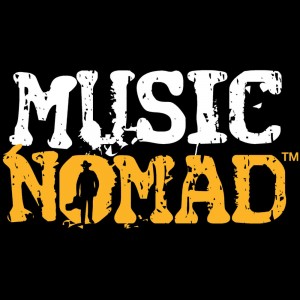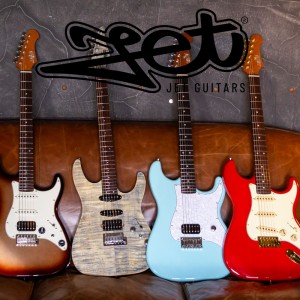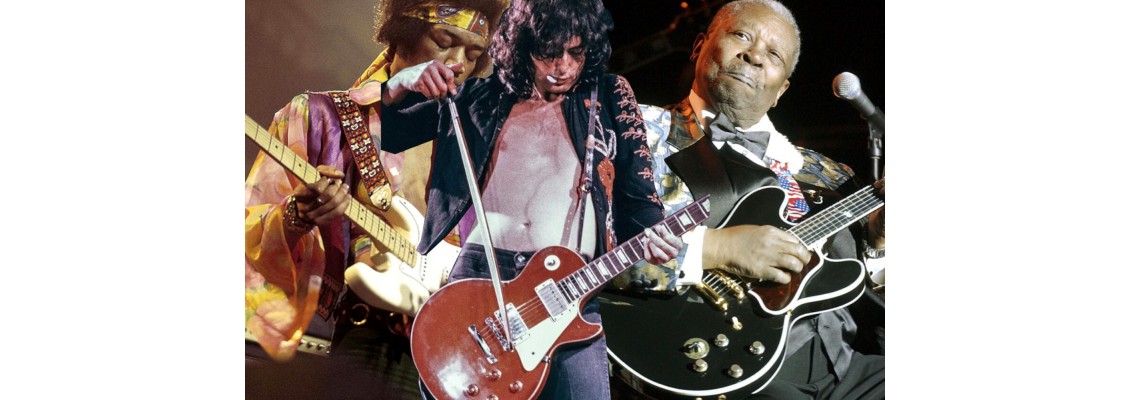
Famous Guitarists and Their Signature Guitars
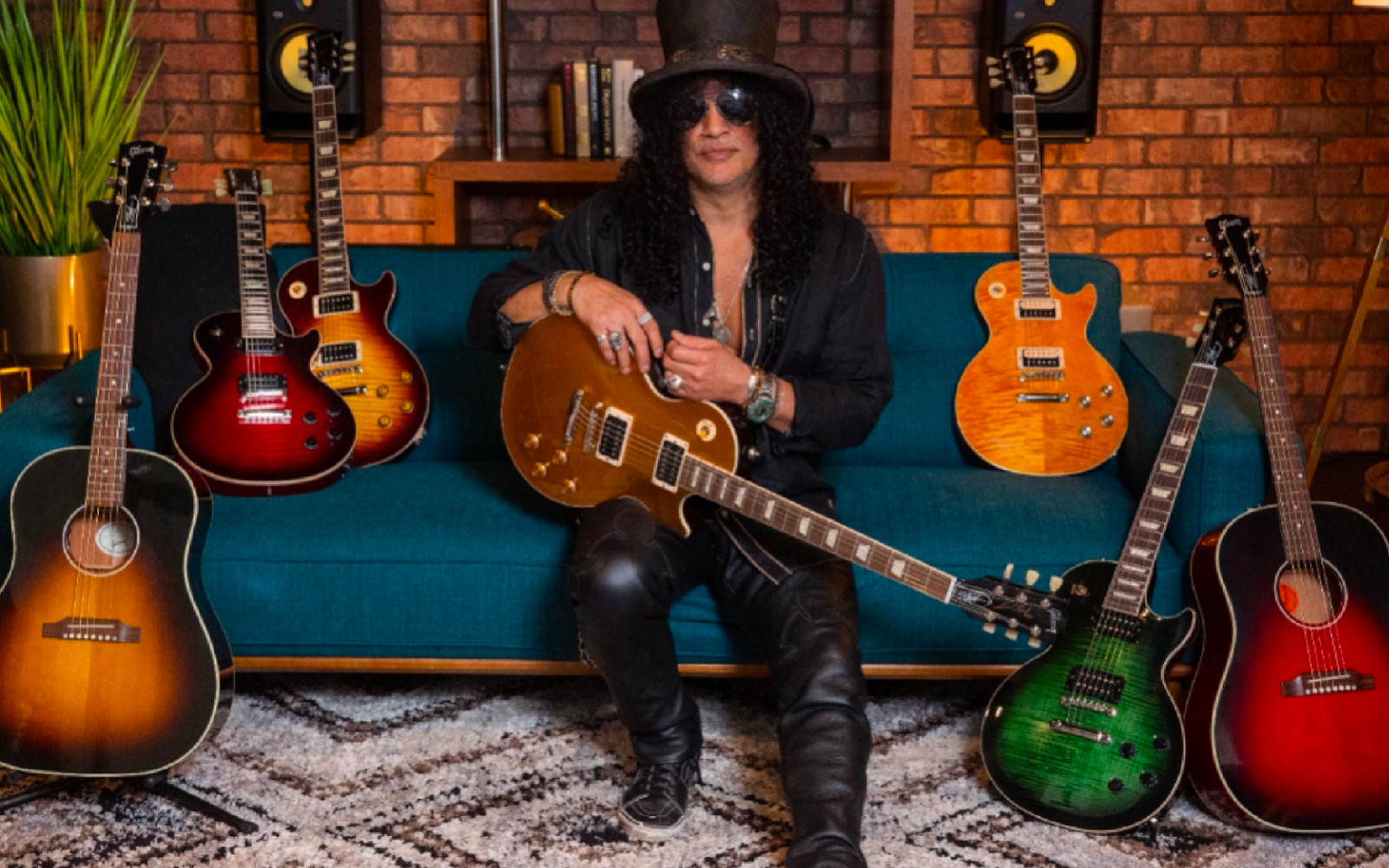
Some people might say this is too many signature guitars......
Guitarists and their signature guitars are synonymous with each other. When you think of iconic guitarists, you cannot help but think of the guitars that they played. Over the years, guitarists have developed a close relationship with their guitars, often modifying and personalising them to suit their playing style. In this article, we will take a look at six famous guitarists and their signature guitars.
Jimi Hendrix and his Fender Stratocaster
Jimi Hendrix was born in Seattle, Washington in 1942. He began playing guitar at the age of 15, and his natural talent and innovative style quickly caught the attention of local musicians. In the early 1960s, Hendrix moved to New York City and played with a number of different bands, including Little Richard's touring band. In 1966, Hendrix moved to London and formed the Jimi Hendrix Experience with bassist Noel Redding and drummer Mitch Mitchell. The band quickly gained a following in the UK with their high-energy performances and Hendrix's virtuoso guitar playing, which included the use of feedback, distortion, and other effects. Hendrix released several classic albums during his brief career, including "Are You Experienced?" and "Electric Ladyland." He became known for his innovative approach to the guitar, which included playing with his teeth, behind his back, and with his amplifier turned up to maximum volume.
Hendrix's influence on rock music and guitar playing cannot be overstated. He was one of the first guitarists to truly push the boundaries of what was possible with the instrument, and his influence can still be heard in countless guitarists today. Tragically, Hendrix died in 1970 at the age of 27 from a drug overdose, but his music and his legacy continue to inspire new generations of musicians.
Hendrix's guitar of choice was the Fender Stratocaster. He famously played a white Stratocaster that he named "White Strat." Hendrix modified his guitar by adding a right-handed tremolo arm, even though he was left-handed. This modification allowed him to create the distinctive whammy bar sound for which he is know.
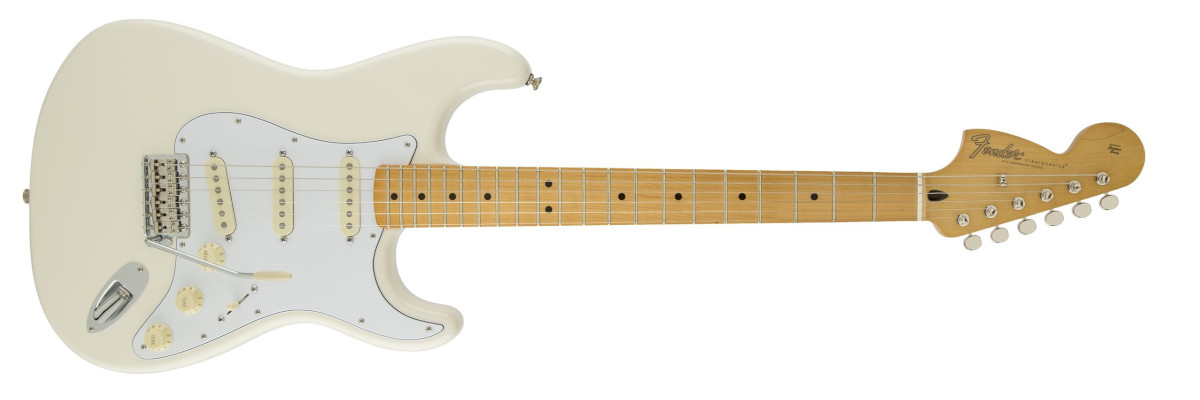
The Jimi Hendrix Signature Stratocaster.........Get in touch if you'd like to order one.......
Eddie Van Halen and his Frankenstrat
Eddie Van Halen was born in Amsterdam, Netherlands in 1955. His family moved to California when he was a child, and it was there that he began playing the piano at an early age. When he was a teenager, he switched to guitar and formed a band with his brother, Alex Van Halen, on drums.
In the mid-1970s, Van Halen's band, now called Van Halen, began playing in clubs around Los Angeles. Their high-energy performances and Van Halen's virtuoso guitar playing quickly gained them a following. In 1978, they released their debut album, simply titled "Van Halen," which became an instant classic and helped usher in the era of guitar-driven rock music. Over the years, Van Halen released numerous hit albums and singles, with Eddie Van Halen's guitar playing at the forefront of their sound. He became known for his unique playing style, which included tapping and other techniques that had never been heard before. Van Halen was also an innovator in guitar technology, creating his signature guitar, the Frankenstrat, and collaborating with the Kramer guitar company to develop the "Van Halen" model guitar.
Eddie Van Halen's influence on rock guitar playing cannot be overstated. He inspired countless guitarists with his innovative playing style and had a major impact on the development of heavy metal and hard rock music. Sadly, Eddie Van Halen passed away in October 2020 at the age of 65, but his legacy as one of the greatest guitarists of all time will continue to live on. He is best known for his signature guitar, the Frankenstrat. The guitar was a combination of different guitar parts, including a Fender Stratocaster body, a Gibson PAF humbucking pickup, and a custom-made neck. The Frankenstrat had a unique sound that was perfect for Van Halen's shredding solos.
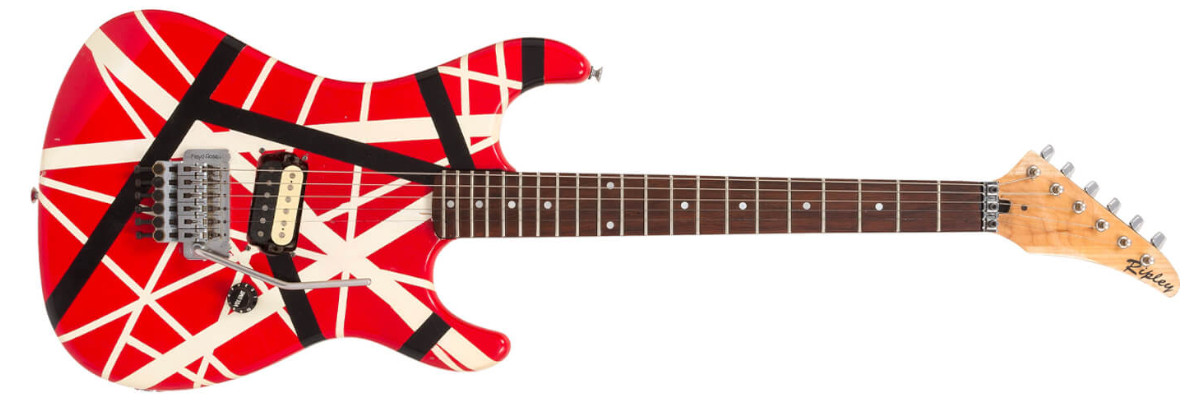
Eddie's FrankenStrat.....
Eric Clapton and his Fender Stratocaster "Blackie"
Eric Clapton was born in Surrey, England in 1945. He began playing guitar at a young age and quickly developed a love for the blues. In the early 1960s, Clapton joined the Yardbirds, one of the most popular British blues bands of the era. He quickly gained a reputation as one of the best guitarists in the UK, and his distinctive playing style influenced many of his contemporaries.In 1966, Clapton left the Yardbirds and joined John Mayall's Bluesbreakers, where he gained even more recognition for his guitar playing. He left the Bluesbreakers the following year to form Cream, one of the first supergroups in rock history. Cream's blend of blues, rock, and psychedelic music was a huge success, and Clapton became known as one of the best guitarists in the world.
Clapton went on to have a successful solo career, releasing numerous hit albums and singles, including "Layla" and "Tears in Heaven." He has also played with a number of other notable musicians over the years, including the Beatles, the Rolling Stones, and Duane Allman.Clapton's playing style is known for its fluidity and emotion, and he has been a major influence on generations of guitarists. He has won numerous awards over the years, including 18 Grammy Awards, and was inducted into the Rock and Roll Hall of Fame three times (as a member of the Yardbirds, Cream, and as a solo artist).
Throughout his career, Clapton has faced personal struggles, including drug and alcohol addiction, but he has also been a vocal advocate for addiction recovery and has used his music to raise awareness about the issue.
His signature guitar is a Fender Stratocaster that he named "Blackie." Clapton's Blackie was pieced together from three different vintage Stratocasters. He used it extensively throughout the 1970s and 1980s, and it became synonymous with his sound.
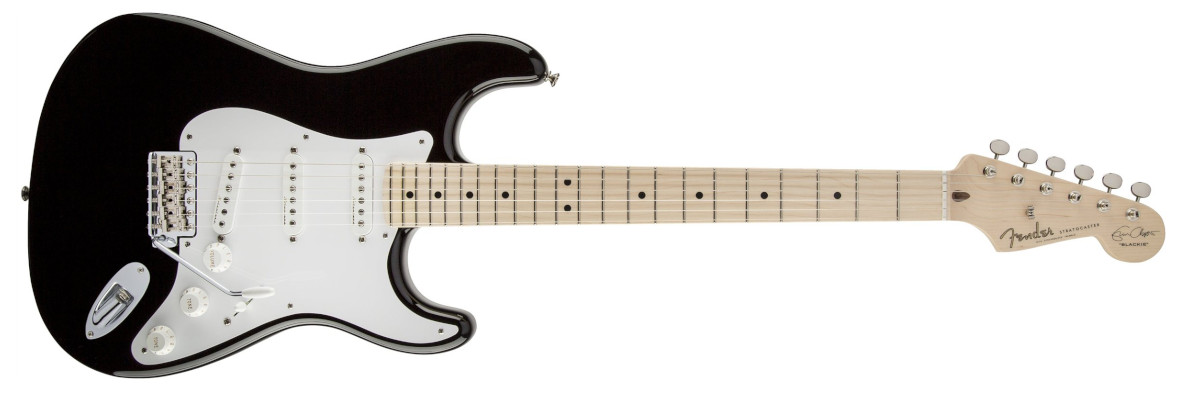
The Eric Clapton Signature Stratocaster
Jimmy Page and his Gibson Les Paul
Jimmy Page was born in London, England in 1944. He began playing guitar at the age of 12 and quickly developed a love for blues and rock music. In the early 1960s, he became one of the most in-demand session musicians in the UK, playing on numerous hit records and backing many of the biggest names in British music.
In 1966, Page joined the Yardbirds, a popular British blues band. He played on many of their most famous recordings, including "For Your Love" and "Heart Full of Soul." When the Yardbirds disbanded in 1968, Page formed Led Zeppelin, one of the most influential bands in rock history. Led Zeppelin released their first album in 1969, and it was an immediate sensation. Page's guitar playing, which blended blues, rock, and folk influences, was a major part of the band's sound. Over the next decade, Led Zeppelin released a string of classic albums and became one of the biggest bands in the world.
Page's playing style is known for its technical proficiency, improvisation, and use of effects such as distortion and wah-wah. He is also known for his use of alternate tunings, which helped create the unique sound of many Led Zeppelin songs. After Led Zeppelin disbanded in 1980 following the death of drummer John Bonham, Page continued to work as a session musician and record solo albums. He has also been involved in numerous musical projects over the years, including the supergroup the Firm and the rock-and-roll revival band the Honeydrippers.
Page's influence on rock guitar playing is immeasurable, and he has been a major inspiration to generations of guitarists. He was inducted into the Rock and Roll Hall of Fame twice (as a member of the Yardbirds and Led Zeppelin) and has won numerous awards for his contributions to music.
His guitar of choice was the Gibson Les Paul. Page's Les Paul had a distinctive sound that was perfect for his heavy riffs and solos. He used the guitar extensively throughout his career and it has become synonymous with his sound.
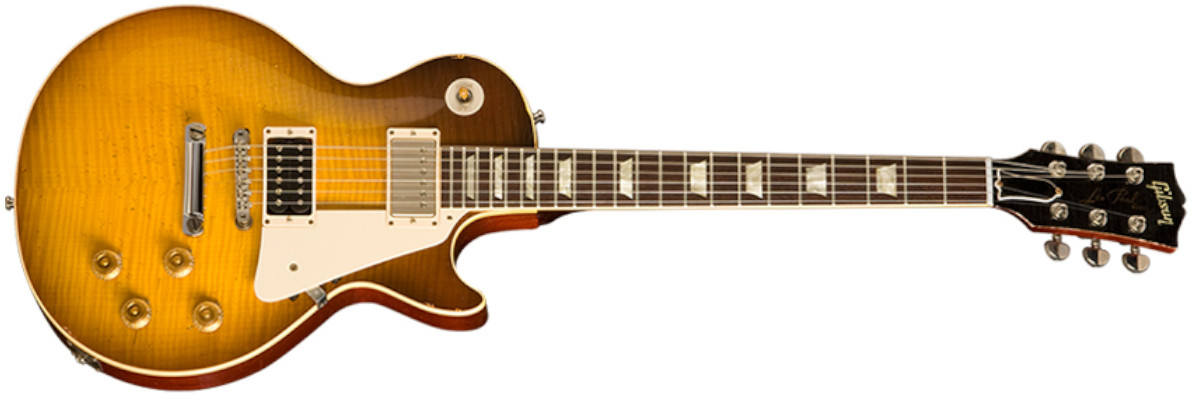
The Jimmy Page Signature Gibson Les Paul.....what a beauty.....
B.B. King and his Gibson ES-355
B.B. King, whose real name was Riley B. King, was born on a plantation in Mississippi in 1925. He began playing guitar and singing in church at a young age, and he later honed his skills playing on street corners and in juke joints throughout the Mississippi Delta. In the late 1940s, King began performing on the radio and touring the southern United States with his band. His popularity grew, and by the early 1950s, he had become one of the most popular blues musicians in the country.
King's playing style, which was heavily influenced by his upbringing in the Delta, was characterized by his precise and soulful single-note runs, his use of vibrato, and his ability to convey a wide range of emotions through his playing. He also developed a distinctive singing style that often involved call-and-response patterns with his guitar. Throughout his career, King recorded numerous hit records, including "Three O'Clock Blues," "The Thrill is Gone," and "Why I Sing the Blues." He also collaborated with a number of other notable musicians over the years, including Eric Clapton, Stevie Ray Vaughan, and U2.
King was known as the "King of the Blues" and was a major influence on generations of guitarists. He won numerous awards over the years, including 15 Grammy Awards, and was inducted into the Rock and Roll Hall of Fame in 1987. He continued to tour and record music until his death in 2015 at the age of 89.
His signature guitar was the Gibson ES-355. The guitar had a semi-hollow body that gave it a warm and mellow sound. King's signature vibrato style was perfectly suited to the guitar's sound.
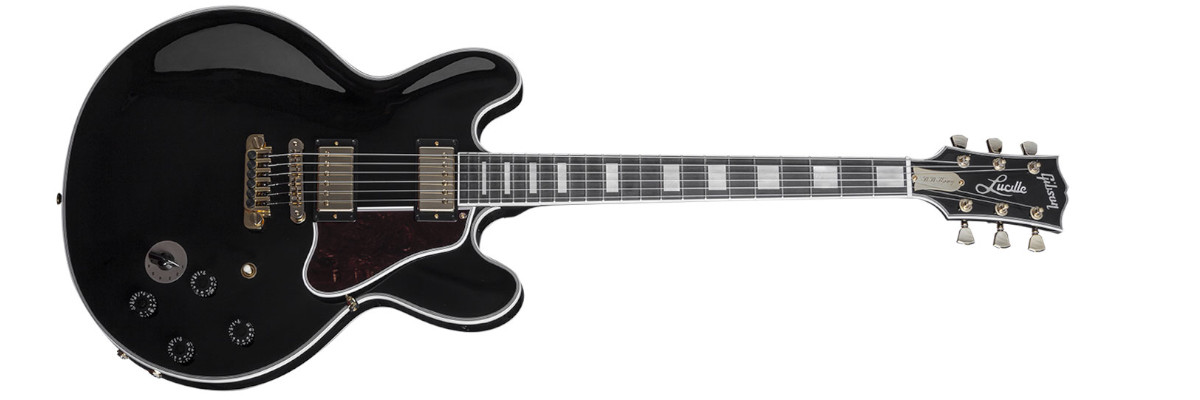
If it isn't Lucille.......
Stevie Ray Vaughan and his Fender Stratocaster "Number One"
Stevie Ray Vaughan was born in Dallas, Texas in 1954. He began playing guitar at a young age and was heavily influenced by the blues music of legends like B.B. King, Albert King, and Freddie King. In the late 1970s and early 1980s, Vaughan began playing in various bands around Texas, honing his skills and building a local following. In 1982, he signed a recording contract with Epic Records and released his debut album, "Texas Flood," the following year.
The album was a critical and commercial success, and Vaughan quickly gained a reputation as one of the most exciting and talented guitarists in the world. His playing style was characterised by his fast and fluid phrasing, his use of powerful bends and vibrato, and his ability to convey a wide range of emotions through his playing. Over the next few years, Vaughan released several more albums with his band, Double Trouble, including "Couldn't Stand the Weather" and "Soul to Soul." He also collaborated with other musicians, including his brother Jimmie Vaughan, David Bowie, and Jackson Browne.
Despite his success, Vaughan struggled with drug and alcohol addiction for much of his career. He checked into rehab in the mid-1980s and was able to get clean, but tragically, his sobriety was short-lived. In 1990, he died in a helicopter crash while on tour in Wisconsin. He was only 35 years old. Vaughan's legacy as a guitarist and musician is immense, and he is often cited as one of the greatest guitarists of all time. His influence can be heard in the playing of countless musicians who have come after him, and his music continues to inspire and captivate audiences around the world.
His guitar of choice was a Fender Stratocaster that he named "Number One." The guitar had a distinctive sound that was perfect for Vaughan's aggressive and emotive playing style. Vaughan modified the guitar extensively, including adding a humbucking pickup to the bridge position and removing the middle pickup.
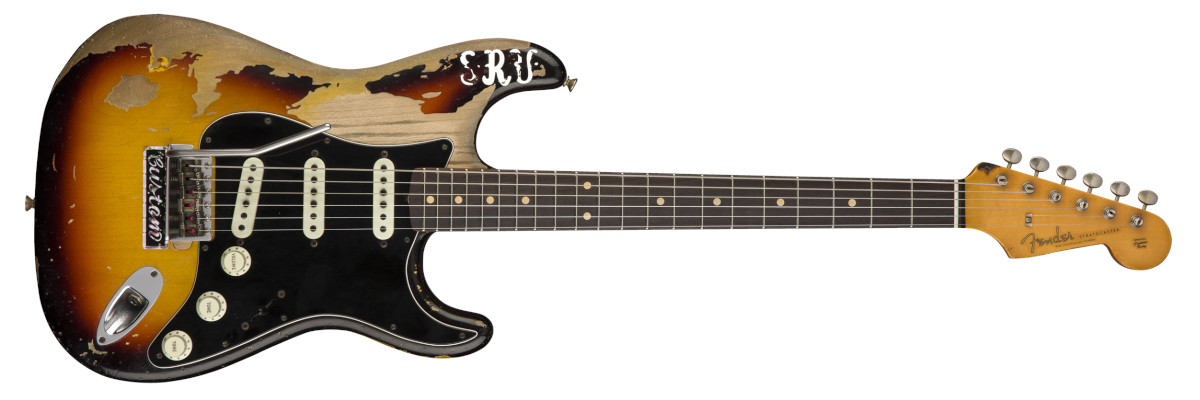
Numero Uno.
In conclusion, a guitarist's relationship with their guitar is a special one. These six guitarists and their signature guitars have become iconic in the music world. Their distinctive sounds have left a lasting impression on generations of guitarists and music lovers alike. Whether it is the Fender Stratocaster or the Gibson Les Paul, these guitars have become synonymous with some of the greatest guitarists of all time.
If you are interested in any of the above guitars, or similar models, fell free to get in touch! We're always here to help.



